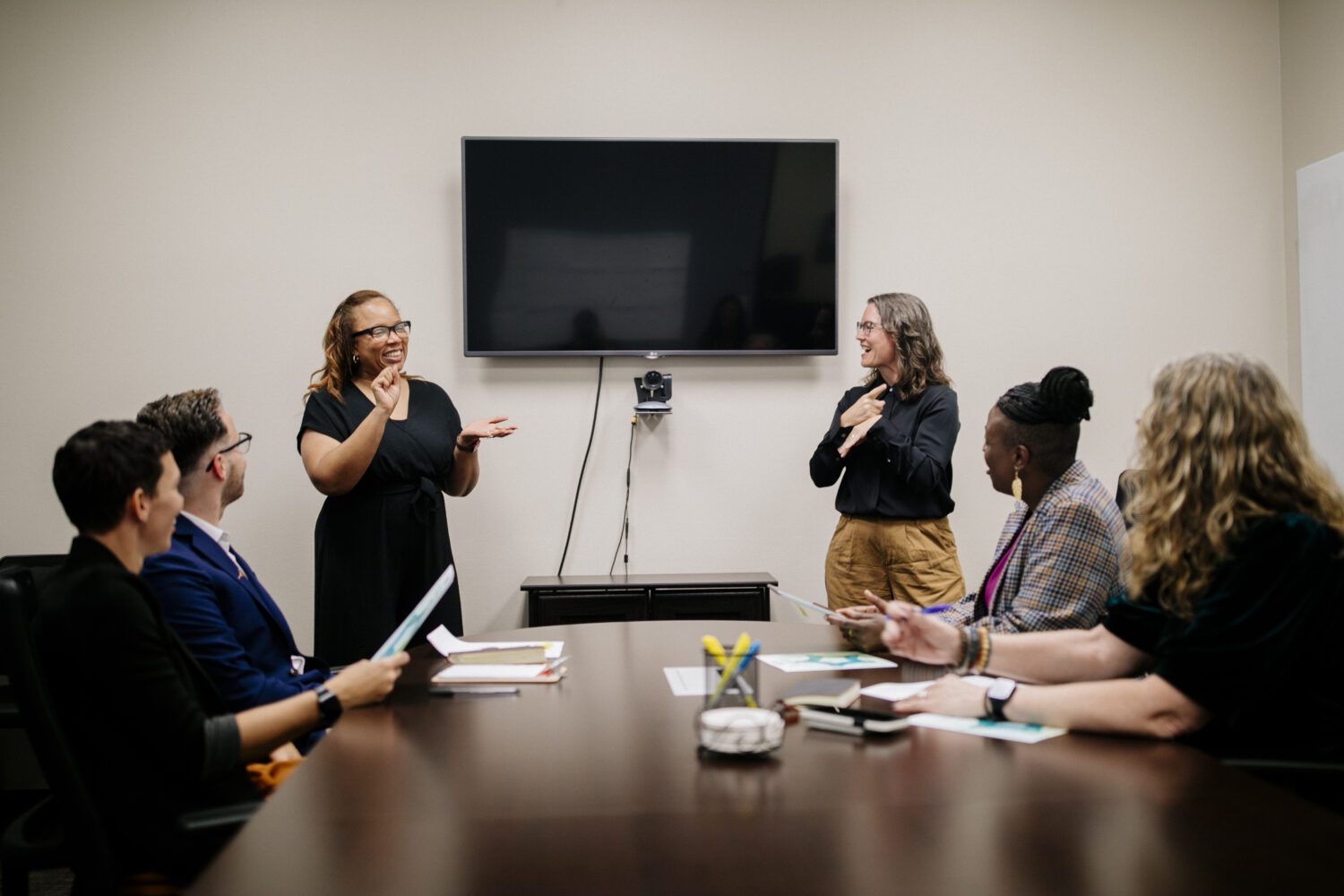The National Deaf Center has released the newest DPAIS report—authored by Jeffrey Levi Palmer, Carrie Lou Bloom, Lore Kinast, and Tia-Nikki Ivanko—which sheds light on the experiences of deaf students in higher education institutions across the United States during the 2022–2023 academic year.
A major highlight of the report is the utilization of the DPAIS, a 17-item questionnaire designed specifically for deaf college students. The scale encompasses three crucial categories: accommodating learning environments, campus connectedness, and deaf-affirming climate. The bilingual presentation in American Sign Language (ASL) and English, along with optional demographic questions, makes it an inclusive and comprehensive tool. With that in mind, let’s take a closer look at the data.
Overview & Key Findings
Deaf college students are diverse. Many have an additional disability, and the number of deaf college students of color are steadily increasing over time. For more information about the demographics of deaf college students, refer to our Undergraduate Enrollment Data report and check out our Deaf College Student Data.
Most deaf college students use more than one accommodation—including sign language interpreting, captioned videos, note-taking services, and extended test time. Deaf college students largely reported subpar experiences with access and opportunities at college—with average ratings of 65 out of 100. One student stated: “My graduate school is not doing a good job in terms of accessibility. They complicate the accommodations process for deaf students who have additional disabilities.” Another said: “The office of admissions, advising office, and disability services need to work together to make sure deaf/disabled students are moved through the system quickly to ensure accommodations are being arranged in time. My first week, I had no accommodations.” There is significant room for improvement.
This report provides insights into promising practices from institutions like the University of Wisconsin–Madison, Manchester Community College, and the Madison Area Technical College. These examples showcase innovative approaches to supporting deaf students, such as specialized programs for non-native English speakers and centralized funding systems to streamline accommodation processes.
Additionally, this report provides comprehensive recommendations for institutions to enhance deaf postsecondary access and support, including:
To learn about the other categories and how they were rated by students, check out the full report.
Prioritizing Accessibility and Community Support
NDC encourages institutions to take action by reviewing and sharing their resources, engaging with peers on our listserv, participating in online learning courses, and contacting them for customized support. The aim is to create an accommodating, connected, and deaf-affirming campus for all. Additionally, disability services professionals can enhance their skills through the Accessibility Practices Certificate for Deaf Students track of our Certificate Program, as well as discovering tailored resources in our Disability Services Resource Portal.
In summary, this report serves as a reminder to institutions of higher education to prioritize accessibility and community. By implementing the recommendations and strategies outlined in this report, institutions can take significant steps toward creating an educational environment that truly embraces deaf students and fosters the success of all students, including those who are deaf.









